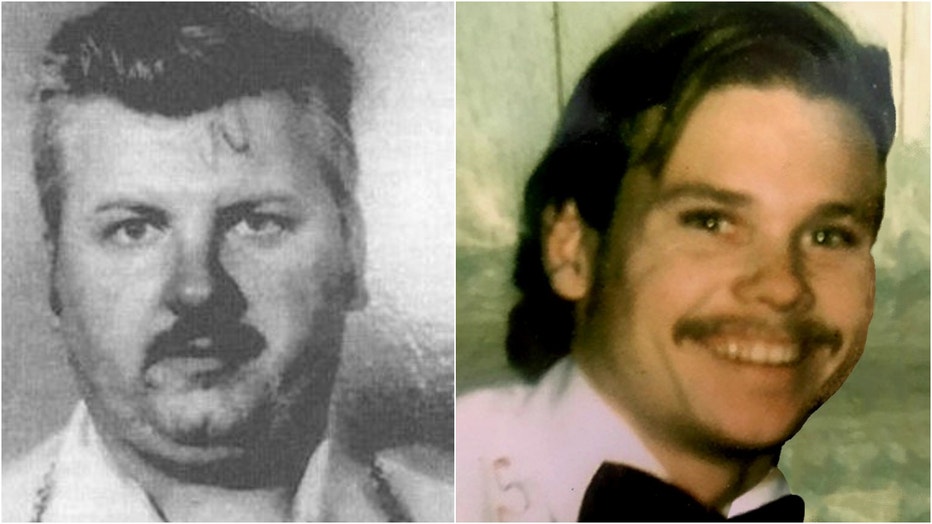North Carolina man identified as victim of serial killer John Wayne Gacy

New Gacy victim identified after more than 40 years
A North Carolina man who moved to Chicago was one of the victims of John Wayne Gacy, who was convicted of killing 33 young men and boys in the 1970s, authorities said Monday.
CHICAGO - Cook County Sheriff Tom Dart’s announcement on Monday was decades in the making.
"We are here today to announce that we have identified yet another one of the victims of John Wayne Gacy‘s massacres," Dart said.
Forty-three years after his remains were found in the crawlspace under Gacy‘s home, sheriff’s police have now identified Francis Wayne Alexander as one of the serial killer’s 33 victims.
It took new technology and the help of a DNA research group to make the match.
Alexander was 20-years-old and just getting divorced when he moved to Chicago from New York in 1975. He lived in an apartment in in the 900 block of West Winona in the Uptown neighborhood, working in a number of clubs and bars in the area.
Then, in 1976, he disappeared.
"There was family that loved him, but he made decisions in his life that led them to believe he just wanted to be left alone," Dart said.
Alexander was bisexual, and police believe he likely encountered Gacy in one of the clubs where the serial killer hunted for his victims.
DOWNLOAD THE FOX 32 CHICAGO APP FOR BREAKING NEWS ALERTS
In 1978, police discovered 29 bodies buried beneath Gacy’s Norwood Township home. He was later charged with murdering 33 young men and teenage boys. Many of the victims, including Alexander, could not be identified.
Until now.
On Friday, Cook County Sheriff’s Detective Jason Moran flew to Alexander’s hometown in North Carolina to break the news to Alexander’s mother and family.
"They had five generations in one room," Moran said. "They’ve all been waiting to hear some news about their missing son, brother and uncle."
In a statement, Alexander’s mother and sister wrote: "It is hard, even 45 years later, to know the fate of our beloved Wayne. He was killed at the hands of a vile and evil man… Our only comfort is knowing this killer no longer breathes the same air as we do."

John Wayne Gacy (left) and Francis Wayne Alexander | provided
Last year, sheriff’s police sent DNA extracted from one of Alexander‘s teeth to a nonprofit missing person’s research group, which then uploaded the DNA into a public genealogy site.
"So what we’re looking for is common ancestors between the DNA matches," said Cairenn Binder, one of the leaders of the DNA Doe Project. "When we find those common ancestors, then we know that the John Doe or Jane Doe we’re looking at is also likely descended from the same common ancestor."
SIGN UP FOR EMAIL UPDATES FROM FOX 32 NEWS
By essentially triangulating the DNA, the group pointed sheriff’s police to Alexander‘s family in North Carolina.
"I’m ecstatic we were able to bring some closure," said Dart. "It’s heartbreaking talking to the family. This is the first time we’ve had a parent who was still alive."
Alexander is buried in a pauper’s grave in the western suburbs. His family plans to visit the gravesite and possibly move the remains back to North Carolina.
There remains five Gacy victims who have not been identified. Sheriff’s police plan to submit their DNA to the research group, along with DNA that could solve literally hundreds of other missing persons cases in Cook County.
Alexander’s remains were among 26 sets that police found in the crawl space under Gacy’s home just outside the city. Three victims, meanwhile, were found buried on Gacy’s property and four others whom Gacy admitted killing were found in waterways south of Chicago.
In 2011, Dart’s office exhumed the remains of eight victims, including Alexander, who had been buried without police knowing who they were. Dart called on anyone who had a male relative disappear in the Chicago area in the 1970s to submit DNA. That was the time when Gacy was luring young men and boys to his home to eventually kill them.
Within weeks, the sheriff’s office announced that it had identified one set of remains as those of William Bundy, a 19-year-old construction worker.
In 2017, the office identified a second set as those of 16-year-old Jimmy Haakenson, who disappeared after he phoned his mother in Minnesota and told her that he was in Chicago.
According to the sheriff’s office’s news release, the last known record of Alexander’s life was a traffic ticket he received in Chicago in January of 1976 — a year in which he earned little money.
The submission of DNA from people who suspected Gacy might have killed their loved ones has helped police solve at least 11 cold cases of homicides that had nothing to do with Gacy, who was executed in 1994. It has also helped families find loved ones who while missing, were alive, including a man in Oregon who had no idea his family was looking for him.

